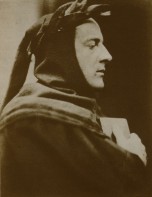| Charles
Dickens
|

A Victorian period is a period when a great variety of styles were used, most notably that of the Gothic Revival, from about 1840 onwards. In architecture the Victorian age was characterized by the recreation of styles from the past, the use of coloured brick as decoration and by introduction of new methods of new methods of construction using iron, steel and glass. Crystal Palace, built for Great Exhibition in 1851, and the main London railway terminals were the spectacular products of the new building methods.
Other examples of the period were: Barry and Pugin ¢ House of Parliament, London; Sir G.G. Scott ¢ Albert Memorial, St. Pancras station; churches, country houses, railway stations, university buildings, all designed in elaborate, even pedantic Gothic by Pearson, Butterfield, Waterhouse and others. Many industrial buildings were build: Paxton ¢ Crystal Palace; Brunel ¢ Clifton Suspension Bridge. Late in the century the ideas of William Morris encouraged the ½domestic revival╗ of Shaw, Voysey and Mackintosh.
In the second half of the century a general revival was led by Sir Hubert Parry (1848-1918), the Irishman C. V. Stanford (1852-1924), and Sir Arthur Sullivan. Apart from StanfordÆs church music and SullivanÆs comic operas (with words by W. S. Gilbert), the work of these composers is seldom played today. They were followed by more important figures of Elgar, Delius, Holst, and Vaughan Williams.
After about 1830, English painting become more conventional and sentimental: the work of Frith, Landseer, Lord Leighton, Alma Tadea, Wilkie, Maclise and others is popular illustration of the fact. The Pre-Raphahaelites, led by Millais and Holman Hunt, tried to revive a simpler, more sincere style. Later in the century Whistler painted in a manner conveying a feeling of atmosphere: he was influenced by Impressionism, as were Wilson Steer and Sickert.
The Victorian age was too respectable for satire and caricature: the popular comic magazine Punch, founded in 1841, is a rich and amusing record of Victorian England, but the Punch artists, John Leech, Tenniel, Keen and George du Maurier produced realistic drawings that can hardly be considered as caricature. In the 1890s portrait caricature was revived by Max Beerbohm. Leading modern caricaturists and cartoonists include Sir David Low, Vicky, Giles, Ronald Searle, and Jack.
The most distinguished sculpture of the mid-19th century is that of Alfred Stevens. Later Victorian sculpture tends to vary between being overrealistic or too simple in its neo-classical form.
There was o lot of the most important specialist museums in London in the second part of century. They include the museums built in South Kensington after the Great Exhibition of 1851: the Victoria and Albert Museum, especially popular with children and the Natural History Museum. The Victoria and Albert Museum, also V&A, is a museum in South Kensington, in London. ItÆs a housing a national collection of fine and applied art of all countries and periods, especially collections of sculpture, watercolours, miniatures, and a large art gallery. The collection includes valuable objects of all styles and periods, such as paintings, Indian works of art, jewellery, and textiles. It grew out of the Museum of Manufactures established at Marlborough House in 1852, and was given its present name (in honour of Queen Victoria and her husband, Prince Albert) when founded in its present form, in 1899.
|